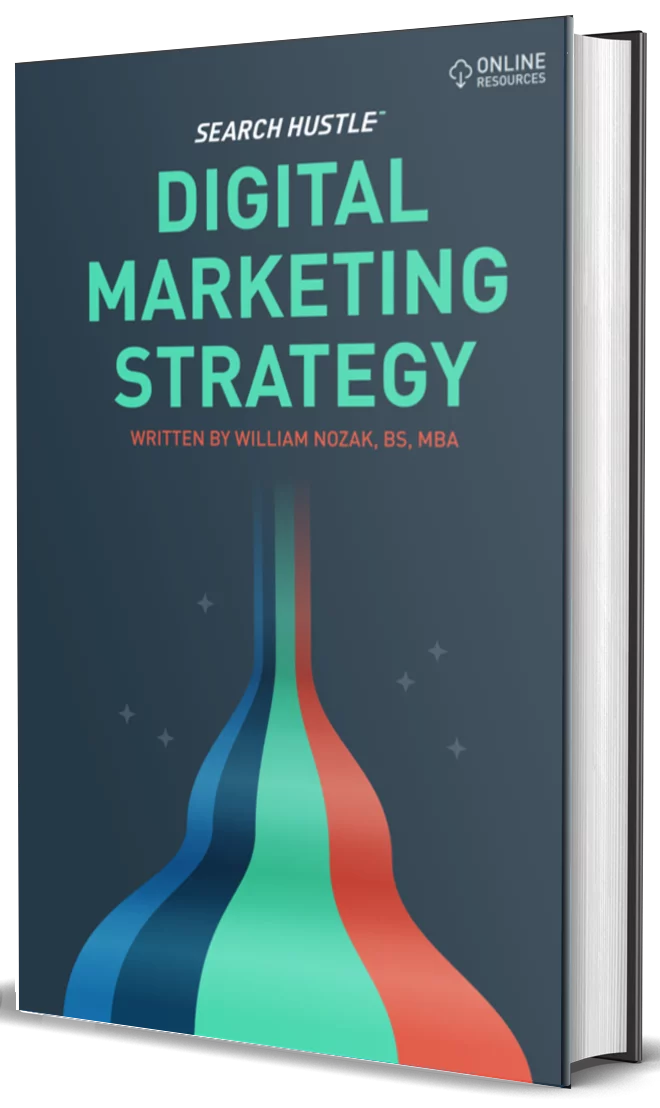Search Engine Basics
Learn about the search engine basics with Search Hustle.
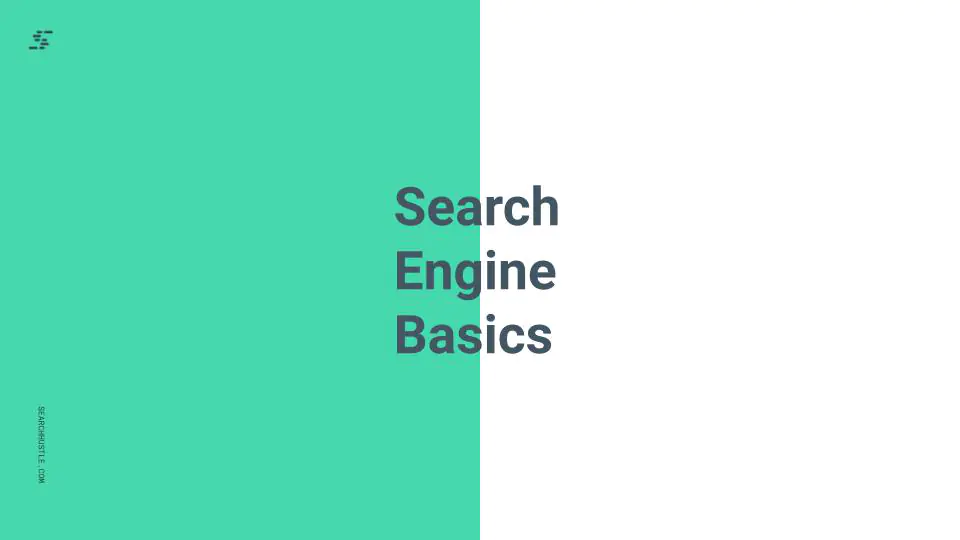
Back in the early 1990s, the internet was a smaller place. There were no real algorithms to filter out high-quality sites from spammy ones. If you wanted to outrank another site in the first place, you simply stuffed more keywords onto a page.
Then, Google became the powerhouse that it is today and introduced revolutionary PageRank algorithms and web crawlers that help with information retrieval. Google uses both on-page and off-page factors to determine ranking in the SERPs (search engine results pages).
If you’re looking to learn about SEO, then there are some search engine basics you need to know.
What Is SEO?
SEO is an acronym for Search Engine Optimization.
It is improving a site’s search engine results page (SERP) ranking through various proven practices. A higher ranking generates more brand visibility, traffic, and sales.
A business owner might say, “How are my SEOs doing?” Or refer to their marketing agency as their SEO company. The word is used loosely these days, mainly because there is a shroud of mystery around SEO. People know what SEO is but may not understand how it works and why it is important.
Many business owners pay marketing agencies large sums of money for web design. These sites look great but are often not designed with SEO in mind. A beautifully designed site is of little value if site visibility is poor and it cannot easily be found online.
SEO takes numerous strategies, principles, and practices; and then applies them to a website to improve its standing. These improvements help the website’s search engine results performance.
However, it is not just one action or area of focus that improves a site’s SEO. Rather, it is a variety of techniques, each with a specific role. SEO’s scope extends beyond the website to the GMB (Google My Business), directories, social media, and other ranking sites to increase a business’s digital footprint.
SEO is the improvement of pages, posts, categories, forms, viewports, load times (TTFB/FMP), and anything that might lead to an improved user experience; essentially, anything that will make it easier or faster for them to achieve their goal.
Educating yourself on search engines and SEO requires an ongoing commitment of time and effort. Just as search engines are constantly adapting, so too must SEO experts. We must learn to roll with the punches and update our SOPs (standard operating procedures.)
If there is one assurance I could provide – it is that SEO is not voodoo. It is both art and science. To succeed, you must follow logic and apply creativity. With enough practice, you can become highly proficient at winning the SEO game, regardless of industry or client.
Three Keys to SEO Success
Success and failure in SEO comes down to time, money, and strategy.
When you think about it, most websites are created to attract attention in one way or another. Irrespective of the product, whether it is informational, a service, or physical good, a solid SEO strategy helps people connect with your website. Any materials created, be it a webinar, banner, article, email, widget, download, or photo, are usually placed to get a user to click through to a landing page or site.
For SEO to work, you must always consider how you can deliver value to those who visit a site rather than simply getting their clicks. We’ll talk about this in more detail in later chapters, but from the onset, you should always consider the value-add you can offer to those who visit your site.
SEO Takes Time
You should know that great SEO doesn’t happen overnight. It takes time to develop a site, build high-value content, and for that content to start working. It also takes time for you or your SEO practitioner to create and implement a robust strategy.
Another thing that I want to clarify is that there is no finite timeline for success with SEO. Although it is possible to see improvements quickly, you can only develop sustainable results over time.
SEO Takes Financial Investment
SEO takes money, so your budget does matter. If your competitors significantly outspend you in their digital marketing (SEO/CPC), they will outperform you too.
I want to be clear that SEO does not require a paid advertisement campaign, but good SEO is not free either. Instead of paid ads, companies will often hire a team or agency to employ the correct principles and techniques to boost a site’s SEO effectively.
It’s true that ad campaigns certainly have their role in a marketing strategy. However, these campaigns work best when paired with solid SEO efforts. What is appropriate to spend for marketing and SEO depends on the size of a business, its industry, and its competition. The adage, “it takes money to make money,” certainly applies here.
SEO Takes Strategy
Finally, you need the right strategy. Algorithms are continually changing. Working with a team that is up to date with the latest trends and best practices can make a big difference.
You do not want to waste your marketing dollars, time, and energy with ineffective practices that will not withstand the test of time (or future algorithm updates.) A results-driven strategy with metrics to track your progress is critical.
Time, financial investment, and strategy will make the difference between success and failure in the long run.
Regardless of the search engine, or the rules of their algorithm, a good SEO strategy focuses on addressing the user’s needs first and the nuances of the search engine second. By staying focused on your VIPs (the users) and their needs, irrespective of search engine algorithm changes, your strategy should be able to weather almost any storm effectively.
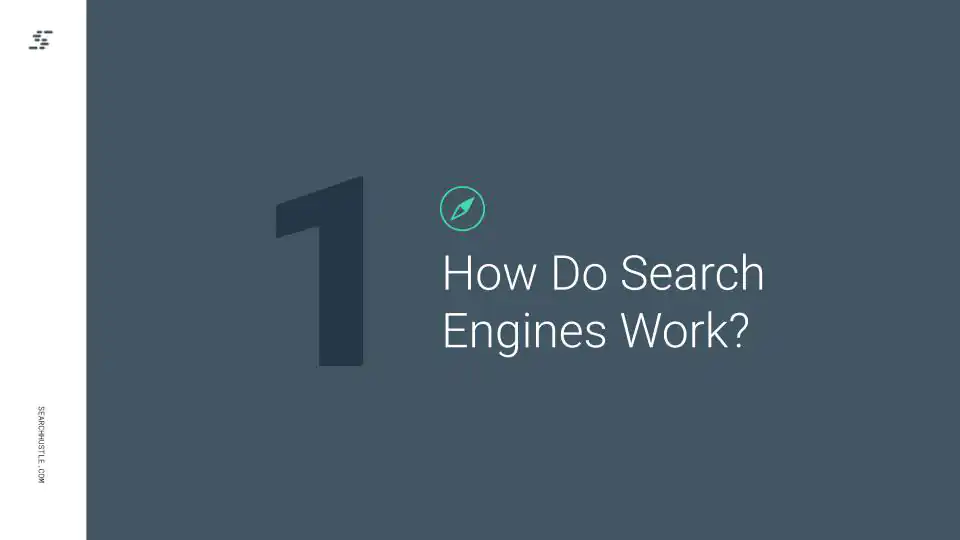
How Do Search Engines Work?
Search engines like Google use algorithms and various factors to rank sites. During this process, search engines carry out three primary functions:
- Crawling – The spiders scour the internet for new content and analyze the code and content for every URL they find.
- Indexing – Search engines store and organize the content of web pages during the crawling process. After a page is in the index, it can appear in the search results for relevant queries.
- Ranking – Search engines use algorithms to evaluate the content and determine which best answers a query. As such, search engines will position (rank) results by most to least relevant. SEO primarily focuses on this area of search engines.
These three processes help form the search engine results pages users will see when they enter a query.
RankBrain
RankBrain is the machine learning part of Google’s core algorithm. It helps to determine where a site is displayed on the results pages.
RankBrain is continually improving its predictions via new observations and training data. Since RankBrain is always learning, search results are constantly shifting to deliver better results for users.
If RankBrain notices that a low-ranking URL can provide a better, more relevant result to a user’s query over a high-ranking URL, then it will edit those results. It will move the more relevant result up on the results page and, in turn, demote other less relevant pages.
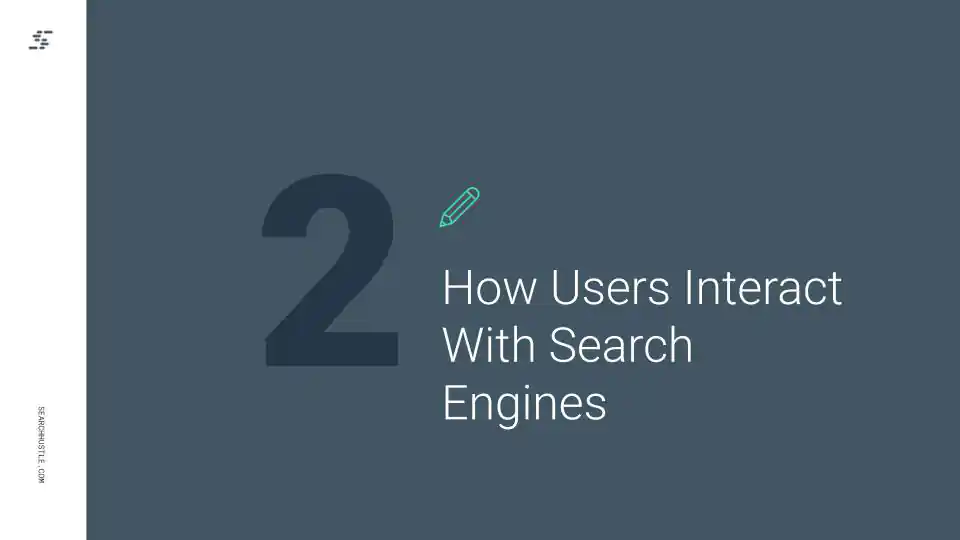
How Users Interact With Search Engines
A person interacts with numerous components of a search engine, each of which is worth consideration.
Search Query Box
All search engines have a search query box. This is the field where users enter their query as a single term or an entire phrase. Users can edit or re-enter a new query into the search query box on the search results page.
Google has an autocomplete feature on its search query box, an often overlooked yet powerful tool for keyword research.
Located near the search query box, you can also find links to an advanced search page, voice search (microphone icon), image search, and video search options.

Vertical Navigation
Vertical navigation encompasses links to search different verticals like images, news, video, or maps. If you follow these links, you will get results for the query with a more limited but specific index.
Results Information
This is metadata that gives you information about each result you see. It will estimate the number of relevant results to a query.
For example, typing “digital marketing school” into Google’s search query box returns the results information: About 1,040,000,000 results (1.04 seconds).
Metadata
This includes the title and description of text shown on the search results page. The purpose of metadata is to tell the user what they can expect if they click on a page link. Think of metadata as information about information, or a small page preview.
Query Refinement Suggestions
At the bottom of the results page, Google offers query refinement suggestions as “Related searches.” This encourages users to search with a more specific query. The specific query is more likely to produce relevant results that satisfy the searcher’s intent.
For example, if you enter “cat toys” into the search query box and then scroll to the bottom, “Related searches” displays the following: cat toys for bored cats, interactive cat toys, amazon cat toys, chewy cat toys, etc. The terms bolded by Google are meant to help give users further refinement suggestions.
However, you can also manually narrow down a query’s results. A user can display results only for a specific website by inputting the phrase “site:” followed by the domain name (e.g., “site:searchhustle.com”). Learning to use search operators is a big part of the research process. Search Hustle has a blog post about this located here: searchhustle.com/blog/google-advanced-search-operators/
Organic Results
Sometimes called “natural search,” organic search results are unpaid. They are link listings on the results page because of their relevance to the search query.
SEO, as a practice, aims to improve a site’s ranking in organic search results.
PPC (Paid Search)
A range of factors influences the results a person sees. Search engines rank listings by relevance and bid amount. Most PPC ads will typically appear at the top of the search results, ahead of any organic results, however, some also appear at the bottom of the page.
To put it simply, PPC makes it possible for a business to buy visits to its site. This is in contrast to a site that earns clicks through organic visits. A growth-minded company should utilize both strategies.
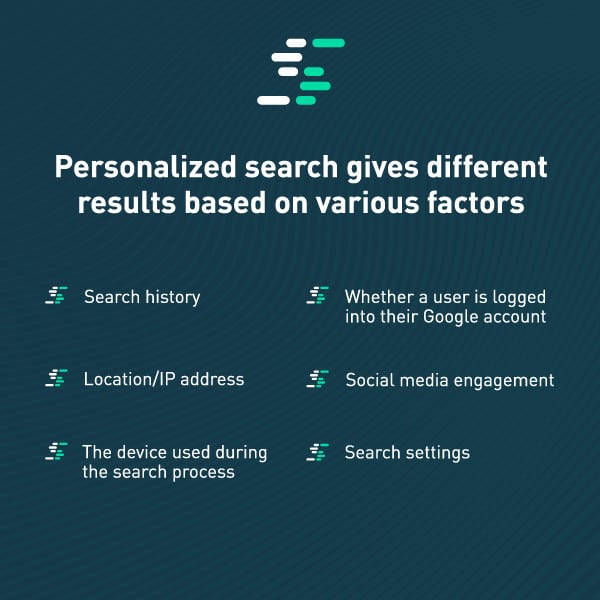
Search Engines are Always Improving
If you were to take a break from using the internet or learning about SEO for a year and then return to it with fresh eyes, you would notice significant changes. You might even feel a bit lost or behind the times. That is because search engines, particularly Google, are constantly tweaking how they serve results to improve the user experience and better provide results to a searcher’s query.
In the digital stone age, Google determined the most relevant pages based on the content and how other sites referred to them. Any user searching a specific keyword would pull up the same results as everyone else searching that exact phrase within the same country.
Currently, there is a considerable shift toward personalized search. Personalized search gives different results based on various factors:
- Search history
- Location/IP address
- The device used during the search process
- Whether a user is logged into their Google account
- Social media engagement
- Search settings
Google’s shift toward personalized search was to help provide the most relevant and useful content based on a user’s search. By utilizing advanced machine learning and user data, Google constantly pushes to find new ways to give the best results for a specific query.
Some of the newest Google features include:
Featured Snippets
Sometimes called “answer boxes,” featured snippets seek to provide an instant answer to a search query without the need to click on a website. Google shows these snippets above the regular organic search results but below any paid ads. Featured snippets come in several types: paragraph, list, table, video, rich answers, tool, calculator, etc.
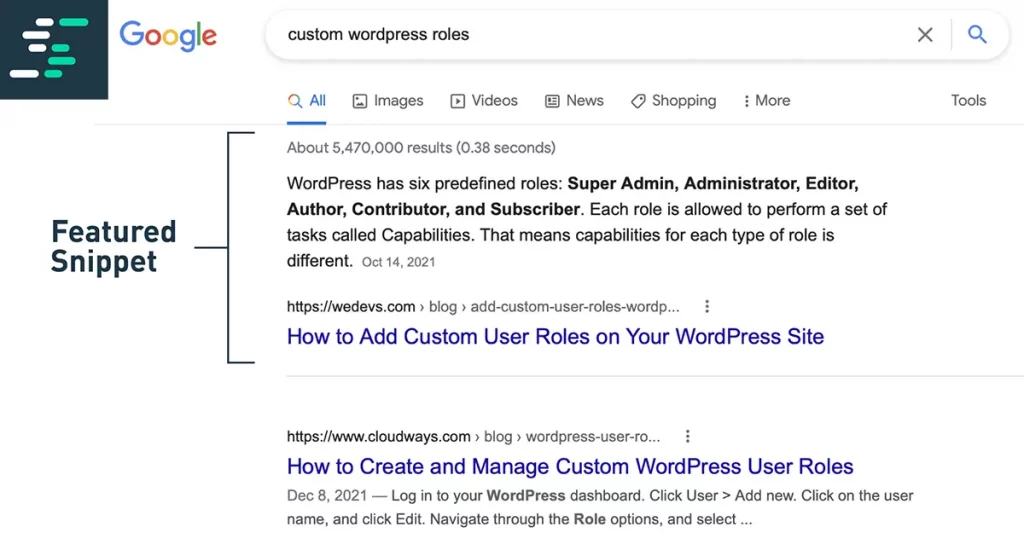
Multitask United Model
Multitask United Model (MUM) is Google’s new Natural Language Processing Model. This new technology is even more powerful than BERT (Bidirectional Encoder Representations from Transformers), an algorithm that helps computers understand the language a bit more like humans do.
MUM is 1000x more powerful and can multitask to analyze video, images, and text in 75 languages. This level of artificial intelligence can give users answers to increasingly complex search queries. This technology is still in the testing phase but is expected to be rolled out soon.
Passage Indexing
This algorithm update from Google makes it possible to use the natural language processing feature during the web page indexing process. The search engine will then try to understand the meaning of passages on a site’s page. This means that a specific section (passage) of a page’s content can now appear in the search results for relevant search queries.
Core Web Vitals
This is an update to the Page Experience Algorithm since May 2021. Core Web Vitals consists of three key page experience metrics: Largest Contentful Paint (LCP), First Input Delay (FID), and Cumulative Layout Shift (CIS). To put it simply, Core Web Vitals is a set of user-focused metrics to help measure page “health” to provide a better user experience.
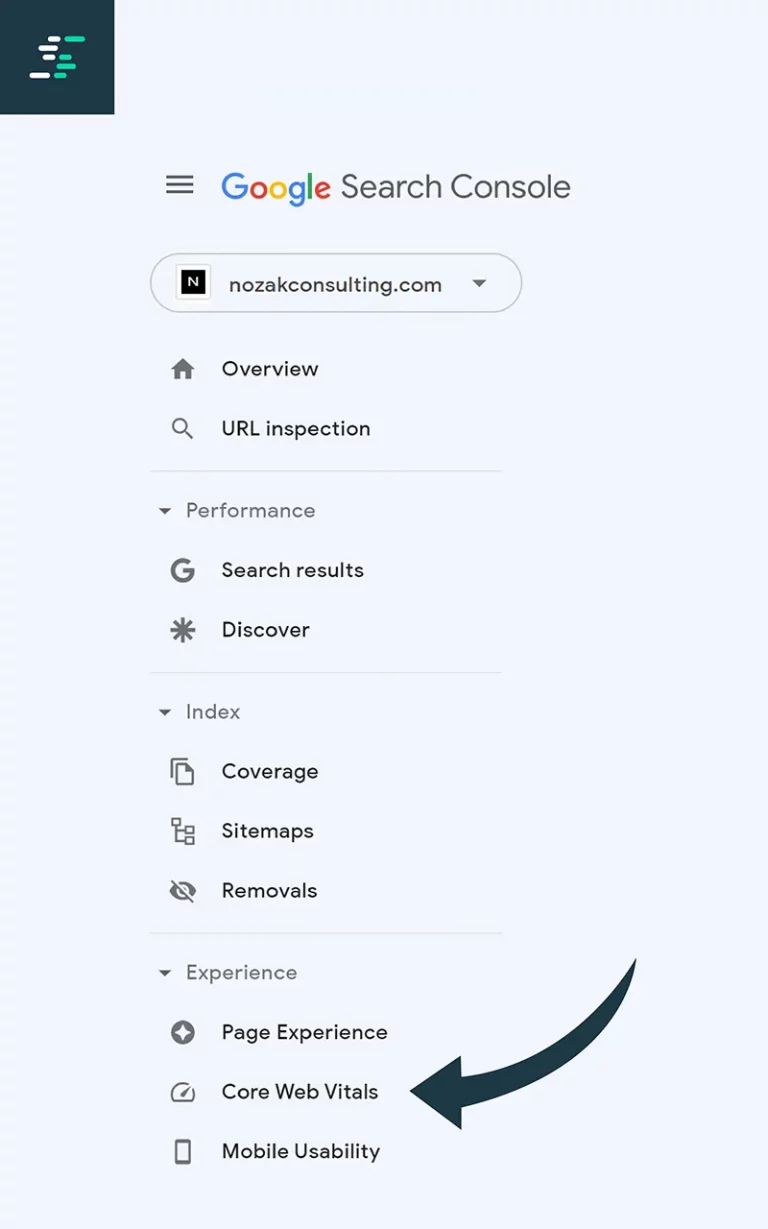
Search Engines Are Always Improving
If you were to take a break from using the internet or learning about SEO for about a year, and then came back to it with fresh eyes, you would likely notice some huge changes. You might even feel a bit lost or behind the times. That is because search engines, especially Google, are constantly updating how they operate in an effort to improve the user experience and better provide results to a searcher’s query.
Learning about search engines and SEO requires continual commitment of time and effort. Just as search engines are always changing how they operate, so too do SEO experts need to learn to roll with the punches and update best practices.

Ready to Take Your Search Hustle Further?


